The importance of the Natura 2000 network
- Homepage
- Pages
- The Griffon Vulture
- The importance of the Natura 2000 network
The Natura 2000 Network
What is the Natura 2000 Network
Natura 2000 is the largest coordinated network of protected areas in the world. It offers a haven to Europe’s most valuable and threatened species and habitats.
This network stretches across all 27 EU countries, both on land and at sea aiming to ensure the long-term survival of Europe’s most valuable and threatened species and habitats, listed under both the Birds Directive and the Habitats Directive.
Natura 2000 is not a system of strict nature reserves from which all human activities would be excluded. While it includes strictly protected nature reserves, most of the land remains privately owned. The approach to conservation and sustainable use of the Natura 2000 areas is much wider, largely centered on people working with nature rather than against it. However, Member States must ensure that the sites are managed in a sustainable manner, both ecologically and economically.

The Natura 2000 Network in Cyprus
The Natura 2000 network of protected sites in Cyprus is constituted by Special Protection Areas (SPAs) which are designated under the EU Birds Directive, and Special Areas of Conservation (SACs) designated under the EU Habitats Directive.
Since it became an EU member in 2004, and having transposed the Directives onto its national law (153(I)/2003 and 152(I)2003 Laws respectively for the Habitats and Birds Directives), the Republic of Cyprus designated 63 Natura 2000 sites. Of these, 34 are SACs, 5 are Sites of Community Importance (SCIs – sites on Cyprus’s national list awaiting SAC designation) and 30 are SPAs. Some of the SPAs are overlapping with SACs and SCIs.
Additional sites have been designated as equivalents to SACs and SPAs within the Sovereign Base Areas, under Sovereign Base Areas Administration’s Ordinances (26/2007 and 21/2208 respectively) which broadly replicate the Republic of Cyprus’ 153(I)/2003 and 152(I)2003 Laws.
The Natura 2000 Network and the Griffon Vulture
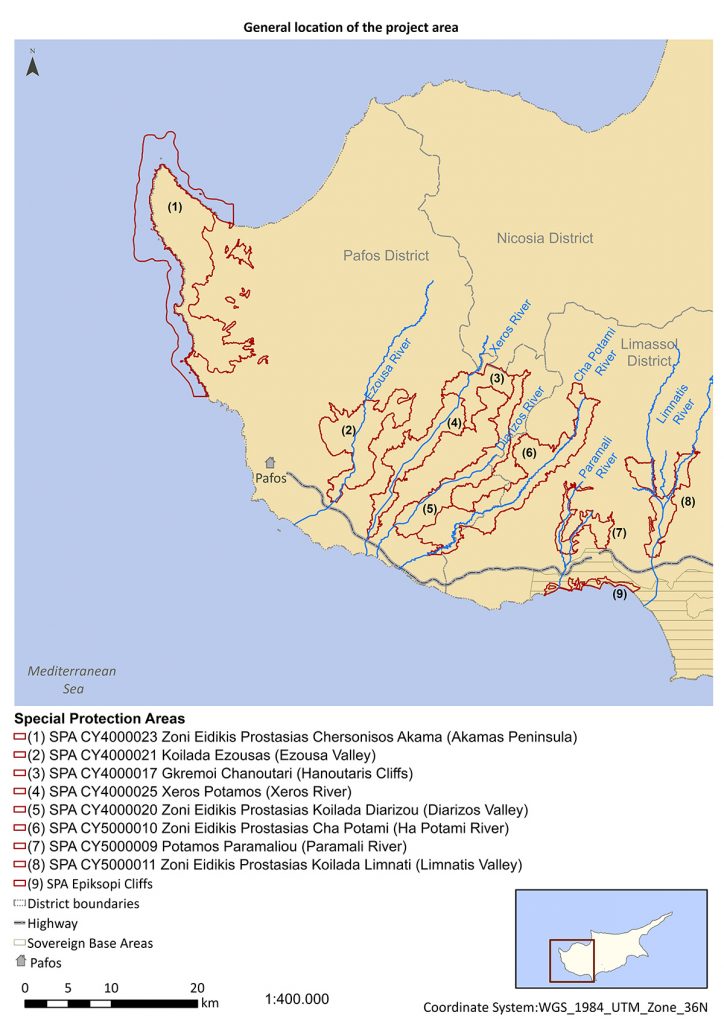
The Griffon Vulture (Gyps fulvus) is listed in Annex I of the Birds Directive and is of conservation priority for the EU. For the designation of some Special Protection Areas (Natura 2000 sites) the Griffon Vulture is a qualifying species.
In Cyprus, there are 9 sites in total that have been identified as critical to the protection and conservation of the Griffon Vulture. It is within these sites that the LIFE with Vultures project will focus the implementation of conservation actions and communication campaign with relevant stakeholders.
The sites that cover the nesting and feeding range of the Griffon Vulture and in which the LIFE with Vultures project will focus its actions are:
Episkopi Cliffs (within the Sovereign Base Areas and designated as SPA-equivalent under the SBA 2008 Game & Wild Birds Ordinance mirroring the Republic’s Law which implements the Birds Directive)
Paramali River
Limnatis Valley
Ha Potami River
Diarizos Valley
Xeros River
Ezousa Valley
Hanoutaris Cliffs
Akamas Peninsula
Natura 2000 Code: N/A
EPISKOPI CLIFFS SPA
The SPA falls under the jurisdiction of the British Sovereign Base Areas (SBAs) where the EU law does not apply. Episkopi Cliffs is designated as SPA-equivalent under the SBA 2008 Game & Wild Birds Ordinance mirroring the Republic’s Law 152(I)2003 implementing the Birds Directive.
The dramatic topography at the site, creating steep vertical sea cliffs, forms the most important and only remaining nesting colony of the Griffon Vulture population on the island, with around 2-3 active nests every year. Although the site is at a relatively good condition, some threats to the biodiversity of the area exist. Additionally habitat loss and fragmentation as a result of pressure for residential development and development of road infrastructure is an identified threat, that has as a result the knock-on effect of increased disturbance to previously isolated sites.
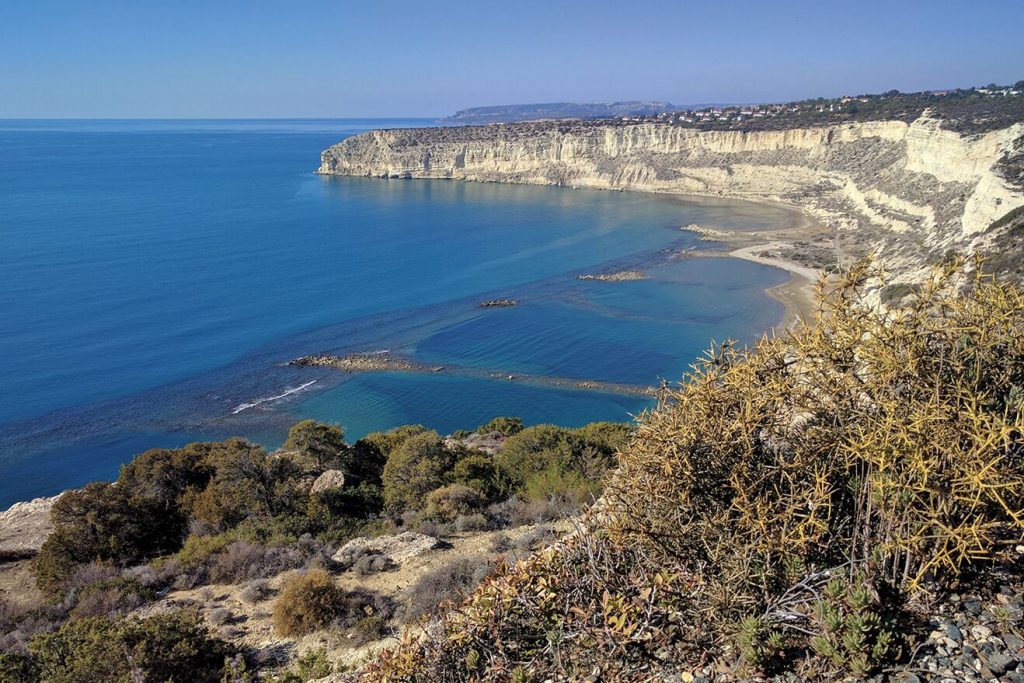
Natura 2000 Code: CY5000011
LIMNATIS VALLEY SPA
Limnatis Valley SPA has been identified as a very important site for the species as it is one of the two areas, besides Episkopi Cliffs, where the Griffon Vulture has nested during the last decade (a pair nested at Limnatis Valley in 2006, 2008 and 2010), while it remains an important feeding area.
A specially designed aviary for keeping and feeding Griffon Vultures which were received from Crete in the framework of the 2011-2014 Project Gypas (funded by the Cross-Border Cooperation Programme Greece – Cyprus 2007-2013), as well as a government-run Griffon Vulture feeder were constructed within the Limnatis Valley SPA.
Although the site is at a relatively good condition, some threats to the biodiversity of the area exist. Such threats are pressure for residential
development and development of road infrastructure, renewable energy, and
isolated housing.

Natura 2000 Code: CY5000010
HA POTAMI RIVER SPA
Ha Potami River SPA has been identified as a historically important site for the species, as it used to host one of its most important breeding colonies. During the last years, the site is being used by the species as an important feeding area. The existing, government-run Griffon Vulture feeding station found in Malia, within the boundaries of the Ha Potami River SPA, demonstrates the pre-existing focus on this particular site with regards to conservation actions for the species.
Although the site is at a relatively good condition, some threats to the biodiversity of the area exist. These are habitat loss, degradation and fragmentation as a result of pressure for development, such as the operation of a large wind farm within the site, which poses a collision risk for the Griffon Vulture. Pressure for residential and tourism development also exists, including the construction of two large golf courses, with accompanying residential development and roads towards the southern end of the site, as well as isolated housing.
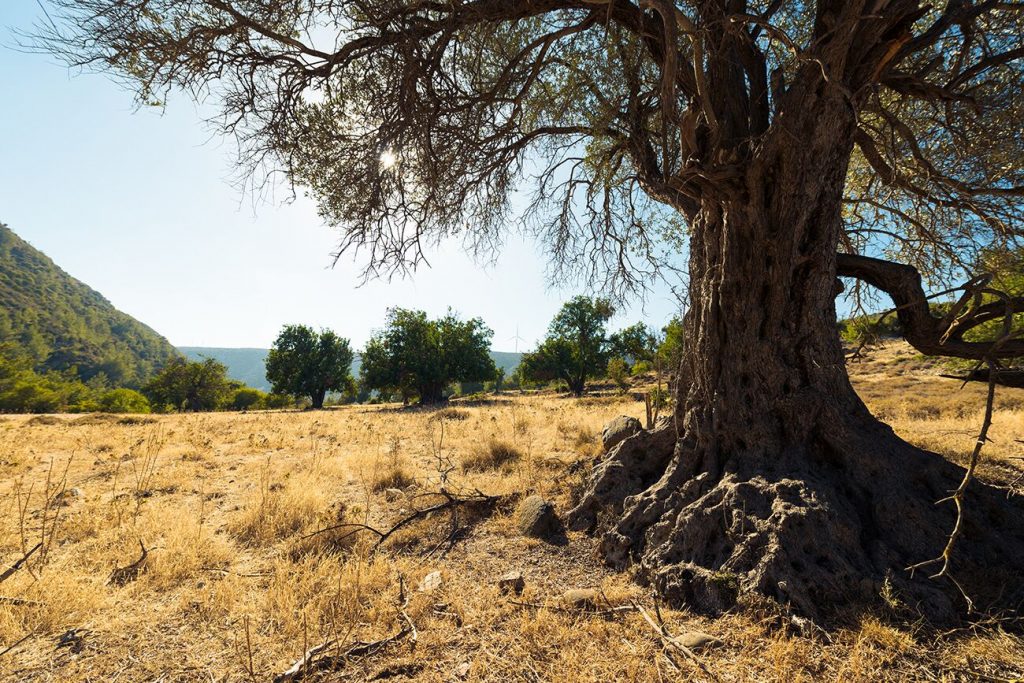
Natura 2000 Code: CY4000020
DIARIZOS VALLEY SPA
Diarizos Valley SPA has been identified as a historically important site for the Griffon Vulture, as it used to host one of its most important breeding colonies. During the last years, the site is being used by the species as an important feeding area, despite the absence of a feeding station.
Although the site is at a relatively good condition, some threats to the biodiversity of the area exist. One of the leading threats the site faces is the modification of the natural riverine system through the creation of dams (such as the Arminou dam) which change the availability of water further downstream with subsequent negative impacts on the riparian vegetation and biodiversity. Other threats are habitat loss, degradation and fragmentation as a result of pressure for development, including road infrastructure and isolated housing.
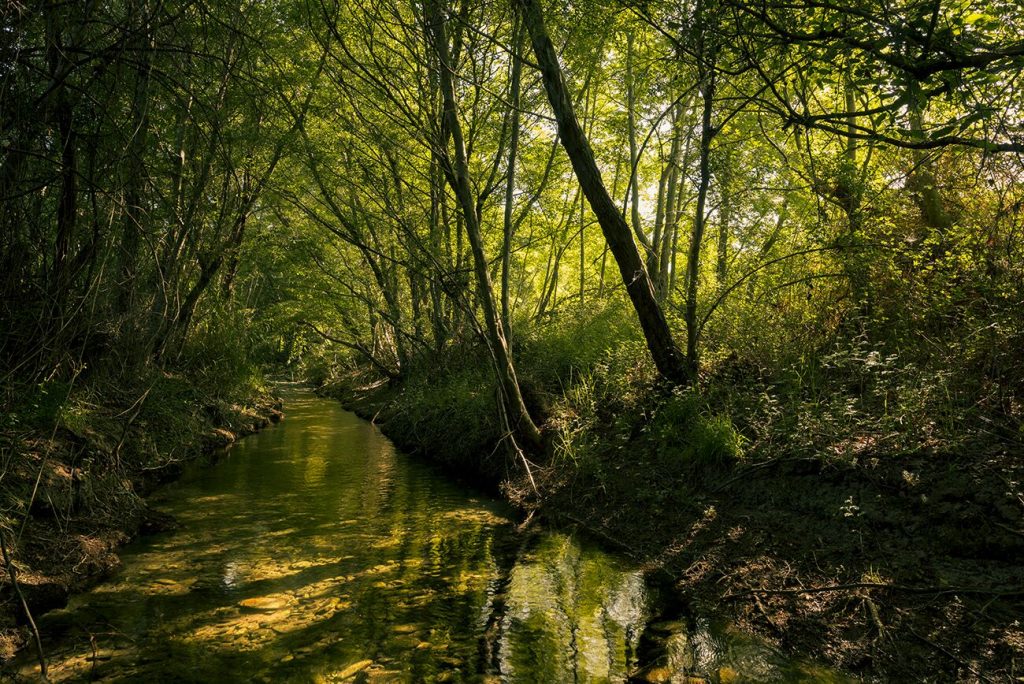
Natura 2000 Code: CY5000009
PARAMALI RIVER SPA
Paramali River SPA has been identified as a historically important site for the species, as it used to host one of its most important breeding colonies. During the last years, the site is being used by the species as an important feeding area. The existing, government-run Griffon Vulture feeding station within the boundaries of the Paramali River SPA, demonstrates the pre-existing focus on this particular site with regard to conservation actions for the species. Although the site is at a relatively good condition, some threats to the biodiversity of the area exist. These include habitat loss and fragmentation as a result of pressure for development for tourism, including the intention to construct two golf courses near the site, which will be accompanied by residential development and roads.
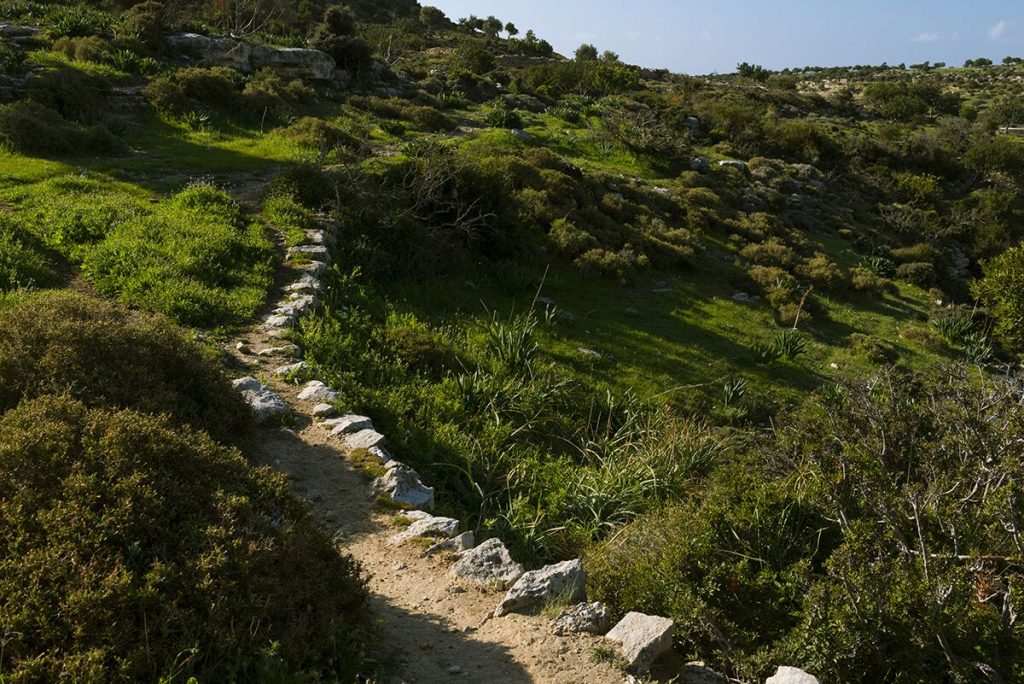
Natura 2000 Code: CY4000025
XEROS RIVER SPA
Xeros River SPA has been identified as a historically important site for the species, as it used to host one of its most important breeding colonies. During the last years, the site is being used by the species as an important feeding area.
Although the site is at a relatively good condition, a wide range of threats exist for the biodiversity of the area. These include habitat loss and fragmentation as a result of pressure for residential developments, renewable energy projects and the opening of roads. Furthermore, the building of dams generated severe alterations to the natural riverine ecosystem and poses a threat to the integrity of the site.
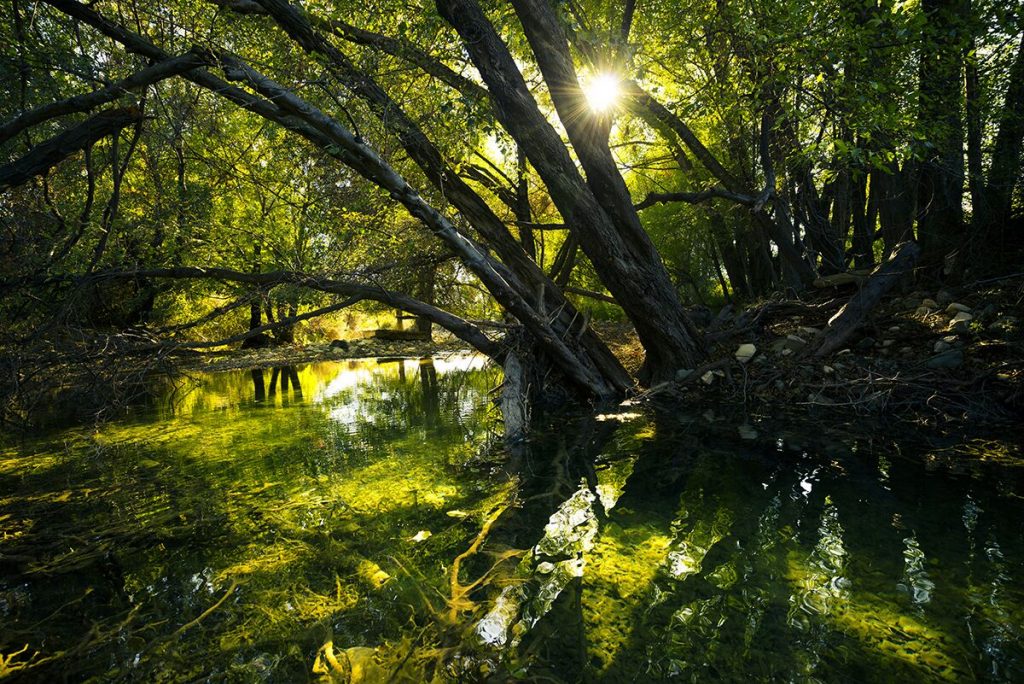
Natura 2000 Code: CY4000021
EZOUSA VALLEY SPA
Although the Griffon Vulture is not a qualifying species for the designation of the site, the project identifies Ezousa Valley SPA as a key area where actions need to be implemented to address the threats facing the species, because it is a good feeding area for vultures. The site faces a number of threats, such as habitat loss and fragmentation as a result of pressure for development for tourism, including an existing golf course accompanied by residential development and roads, isolated housing and road network including the construction of a new motorway. Lack of food for vultures is also a problem at this site.
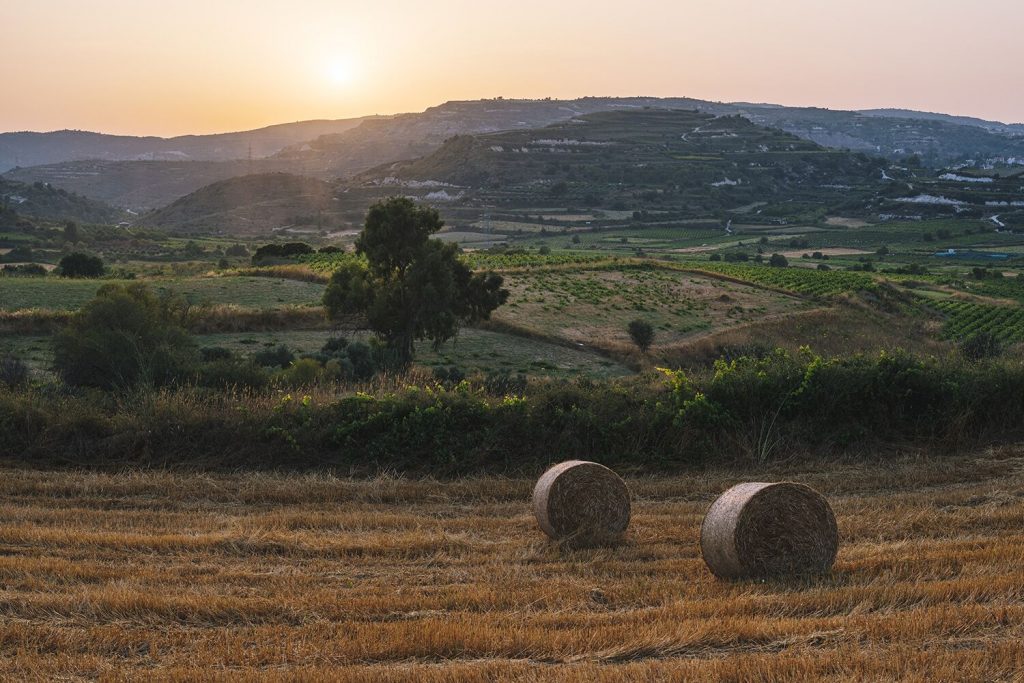
Natura 2000 Code: CY4000017
HANOUTARIS CLIFFS SPA
Hanoutaris Cliffs SPA has been identified as a historically important site for the species, as it used to host one of its most important breeding colonies. Recently, there has been nesting activity recorded at the site and, during the last years, the site is being used by the species for feeding. An aviary for keeping and feeding Griffon Vultures which were received from Crete in the framework of the 2011-2014 Project Gypas (funded by the Cross-Border Cooperation Programme Greece – Cyprus 2007-2013), as well as a government-run Griffon Vulture feeder were constructed within Hanoutaris Cliffs SPA. Additionally, an older cage for keeping Griffon Vultures, constructed by the government in the past in Vretsia, is also within this SPA.
Although this site is at a relatively good condition, some threats exist for its special features. The main threat is habitat loss and fragmentation due to pressure exerted from the development of livestock units. Specifically, a large livestock unit has been established and operates illegally, with a large number of livestock posing severe overgrazing pressure and disturbance to the area.
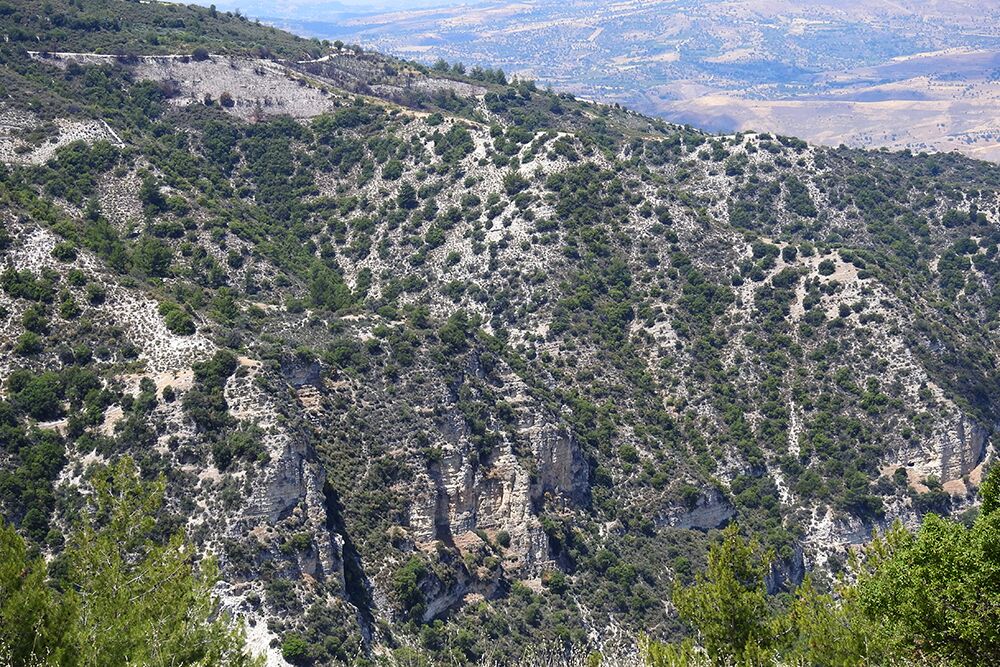
Natura 2000 Code: CY4000023
AKAMAS PENINSULA SPA
Although the Griffon Vulture is not an SPA qualifying species for Akamas Peninsula SPA, Conservation Objectives for this species have been set for this site. This is because it has been identified as a historically important site for the species, as it used to host one of its most important breeding colonies in the past.
There are various threats to the biodiversity of the area. The greatest threat to the site is habitat loss and fragmentation as a result of the continuous pressure for development to cover the needs of tourism, isolated housing, road infrastructure, as well as the operation and expansion of quarries. Other threats include illegal construction of shacks, opening of roads, and the extensive use of 4-wheel drive vehicles and quad bikes off-road and other similar sources of disturbance from recreational activities, especially during the spring and summer months. Fire is also a serious threat to this site.
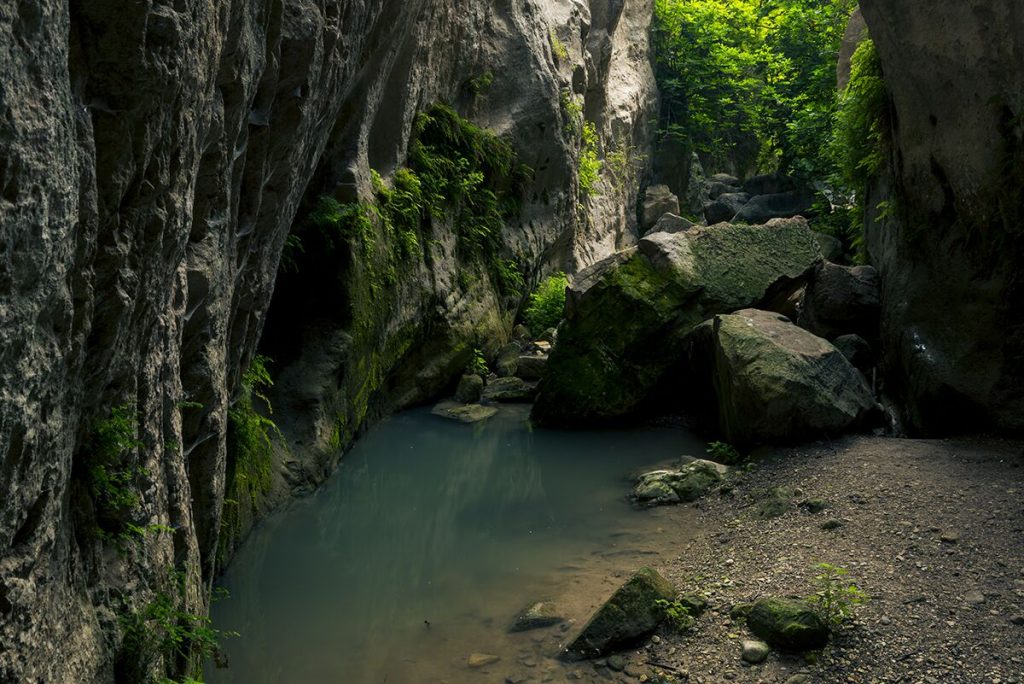
A major threat for all 9 Natura 2000 sites is the uncontrolled grazing pressure (even though non-intensive grazing is generally a good thing) and the use of intensive agricultural methods over traditional ones. Additionally, illegal hunting, illegal trapping of birds and the use of poison baits are serious threats to the species at all these sites. Within 6 protected sites (Ezousa Valley, Paramali River, Diarizos Valley, Episkopi Cliffs, Ha Potami River, and Limnatis Valley SPAs) the risk of collision with overhead power lines is an additional threat not only to the Griffon Vulture, but also other raptors.
